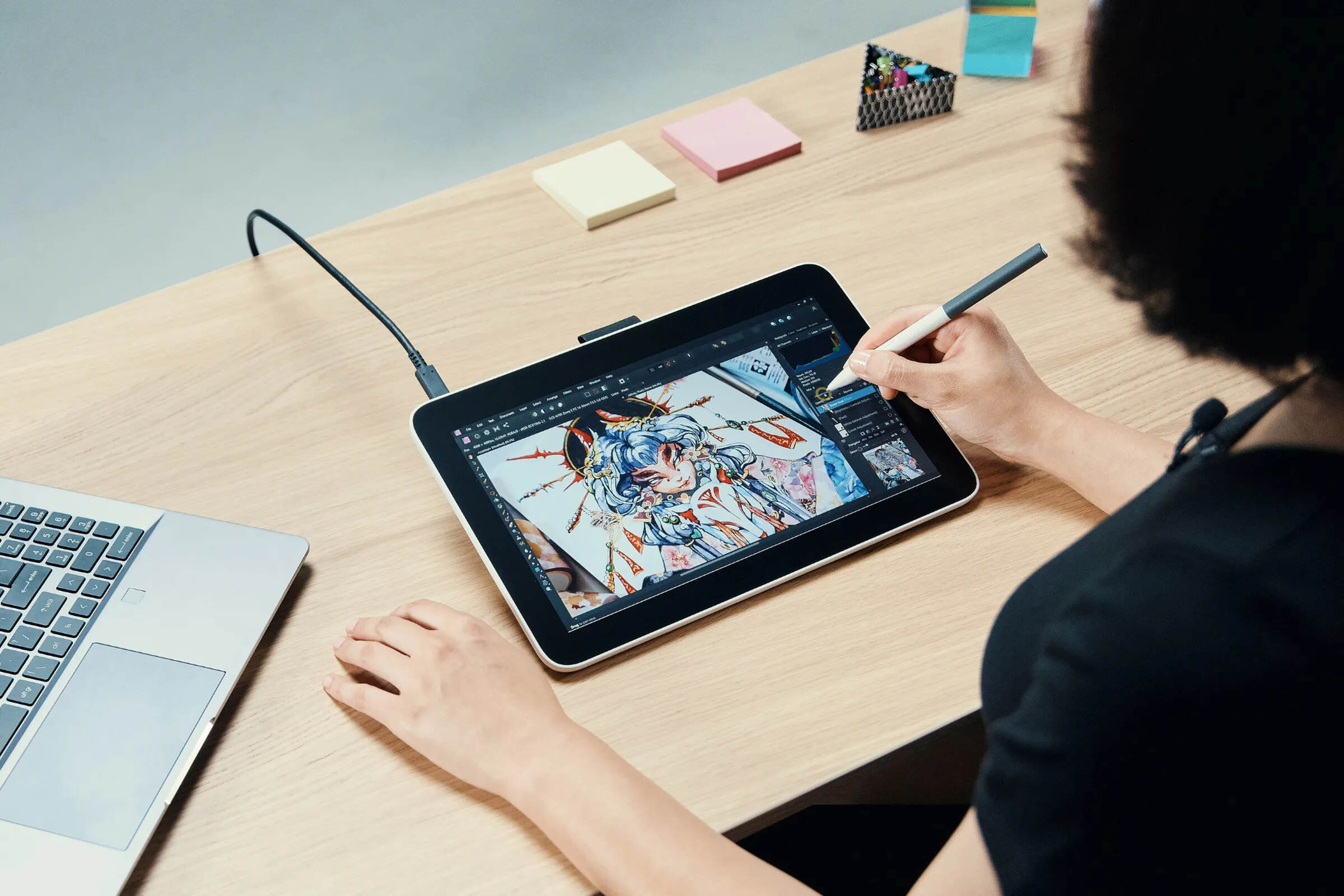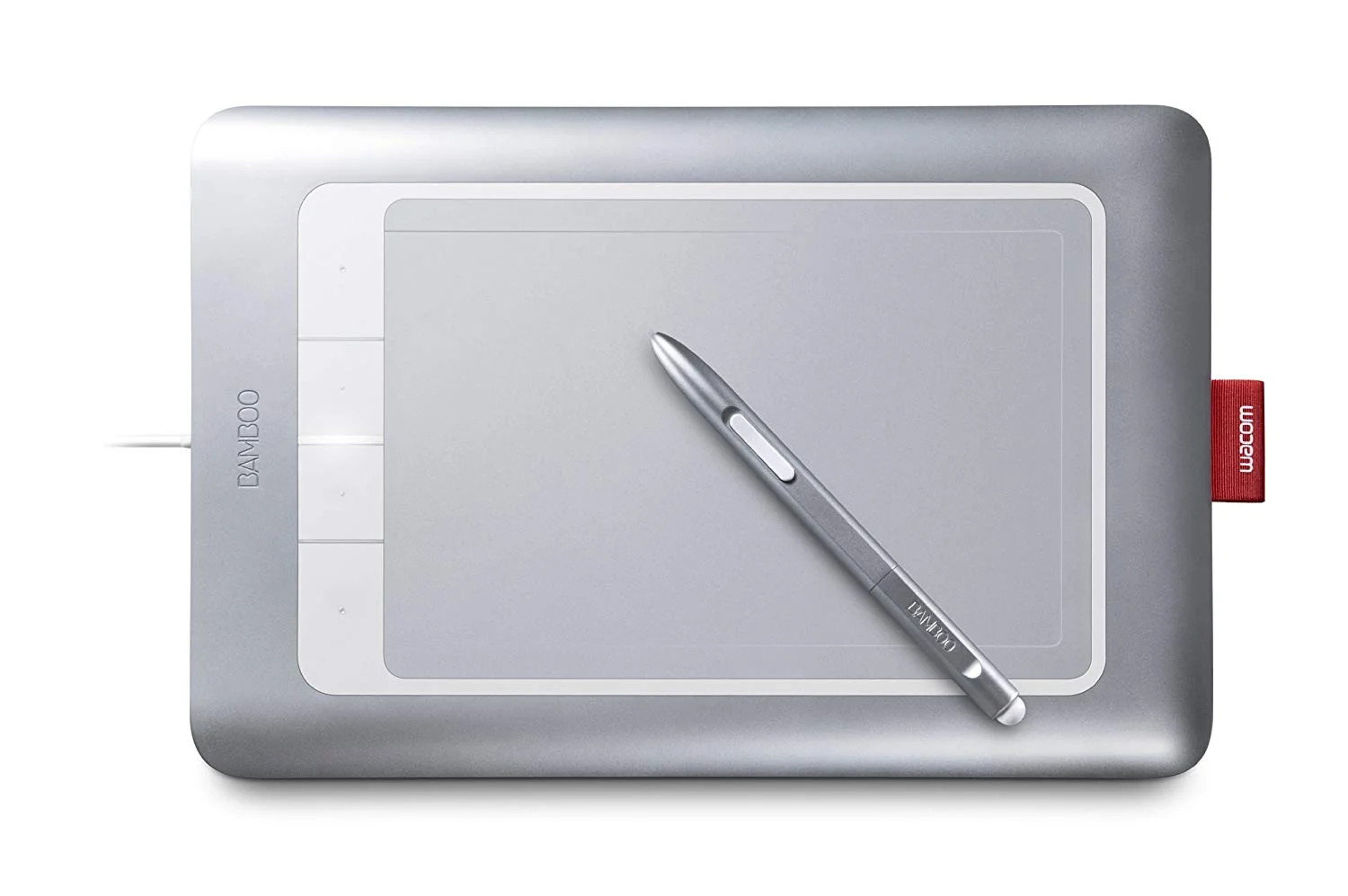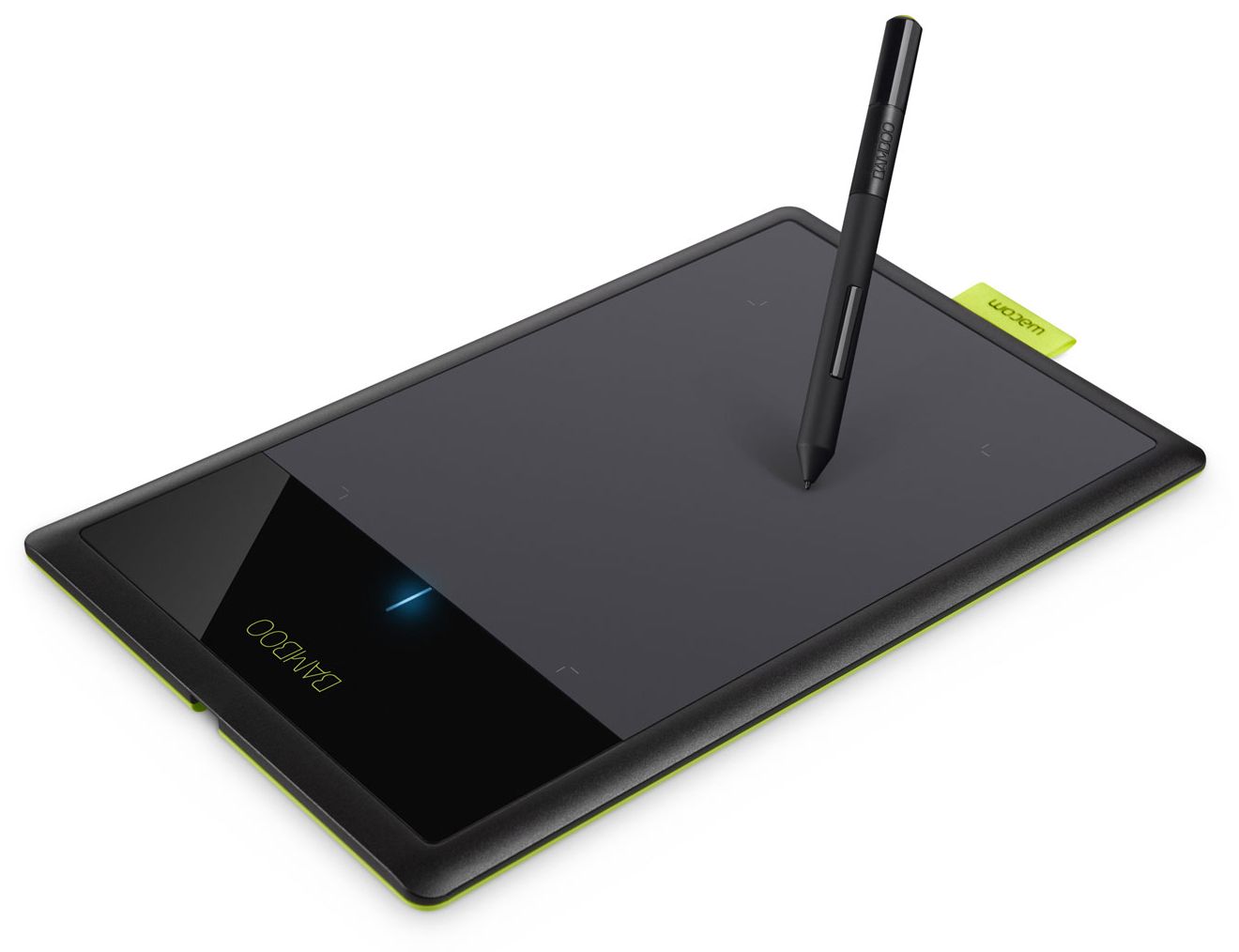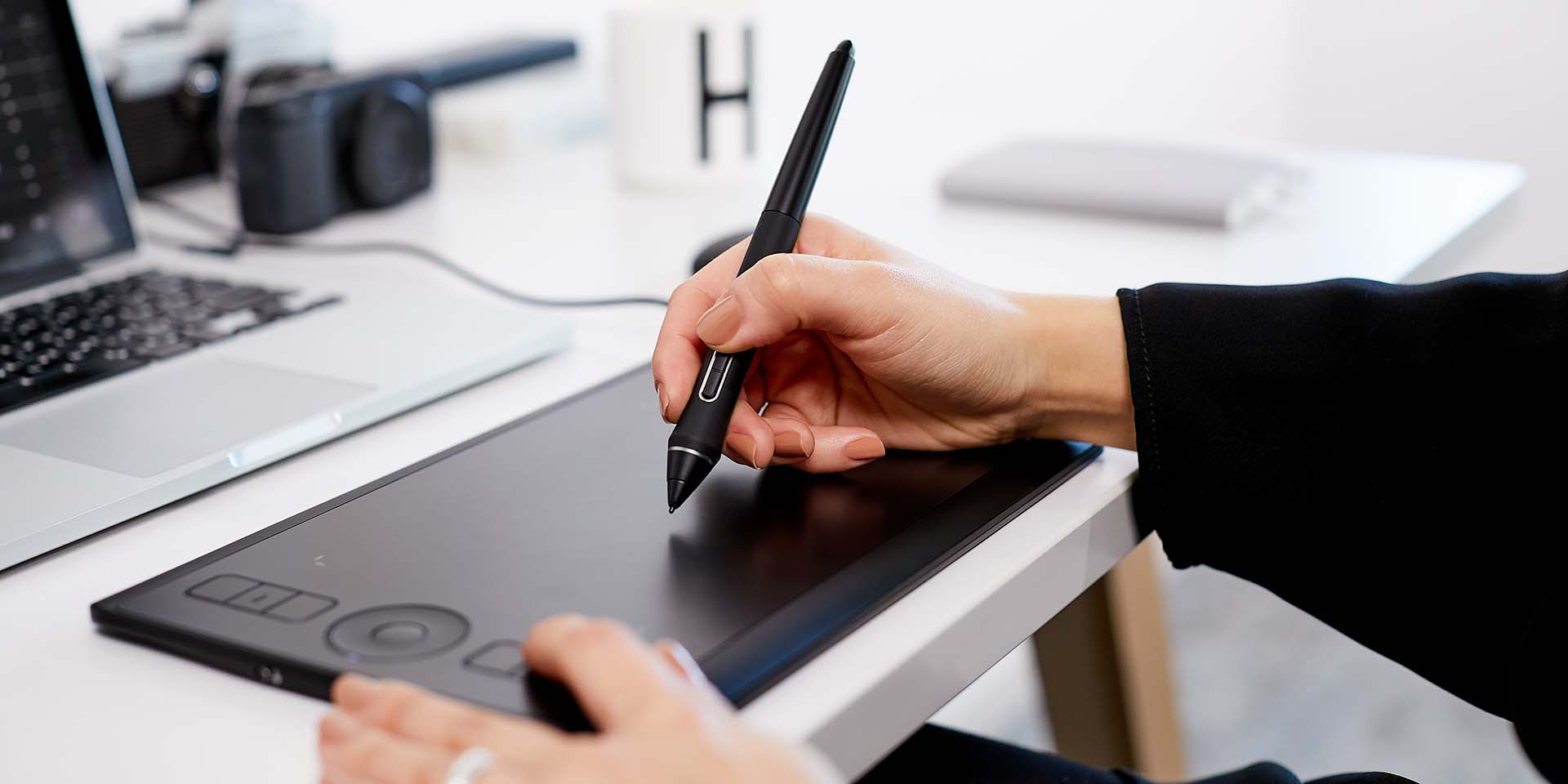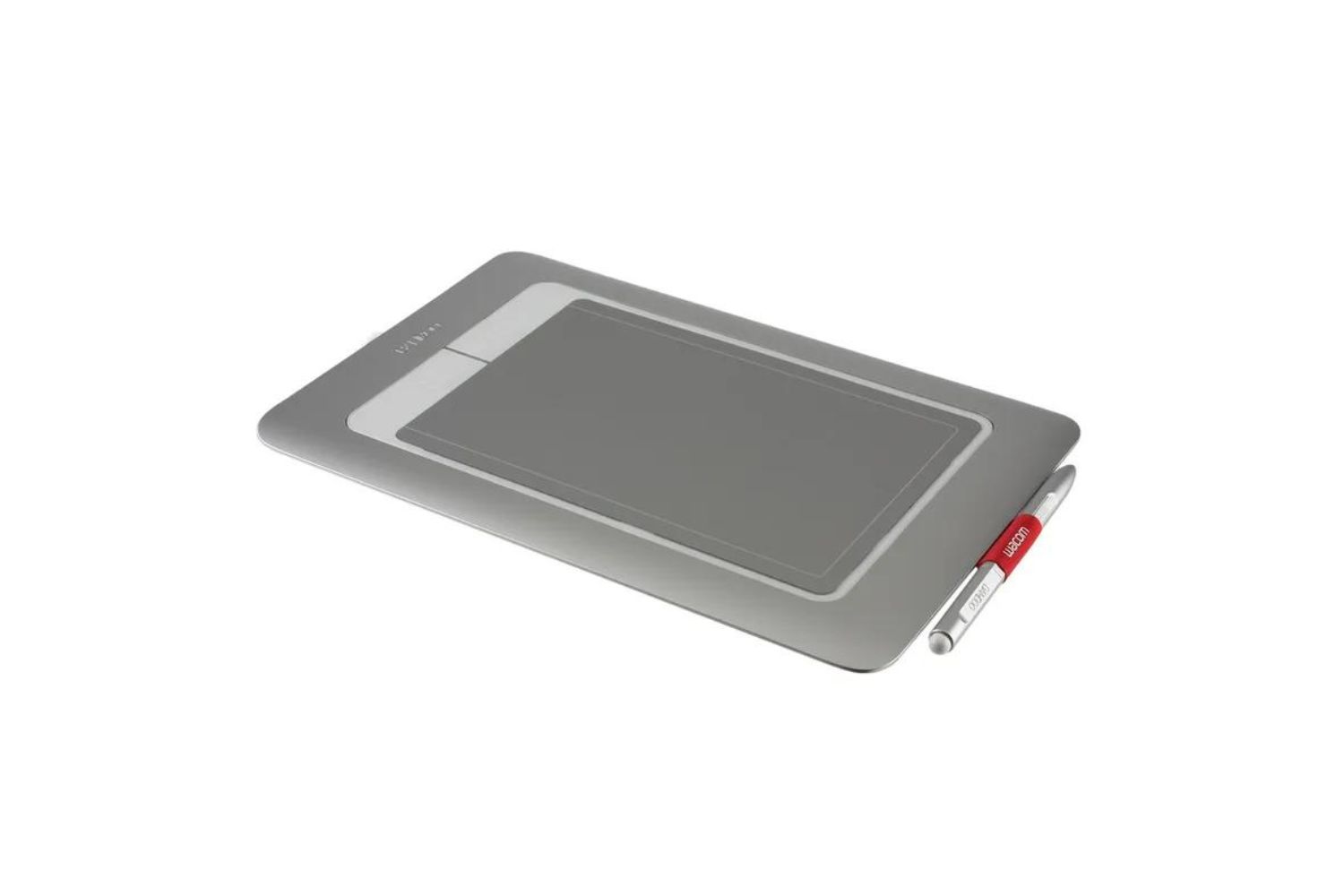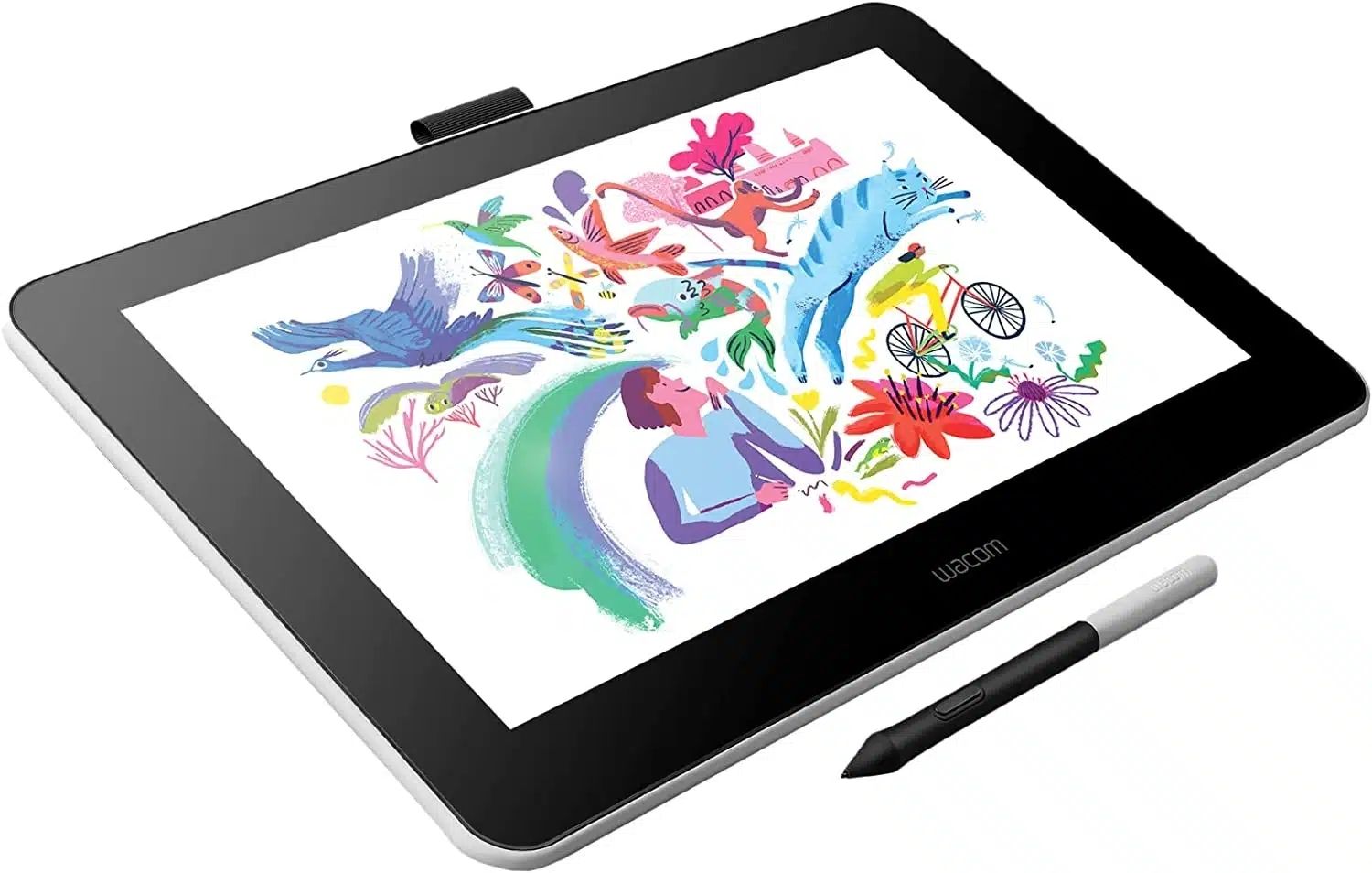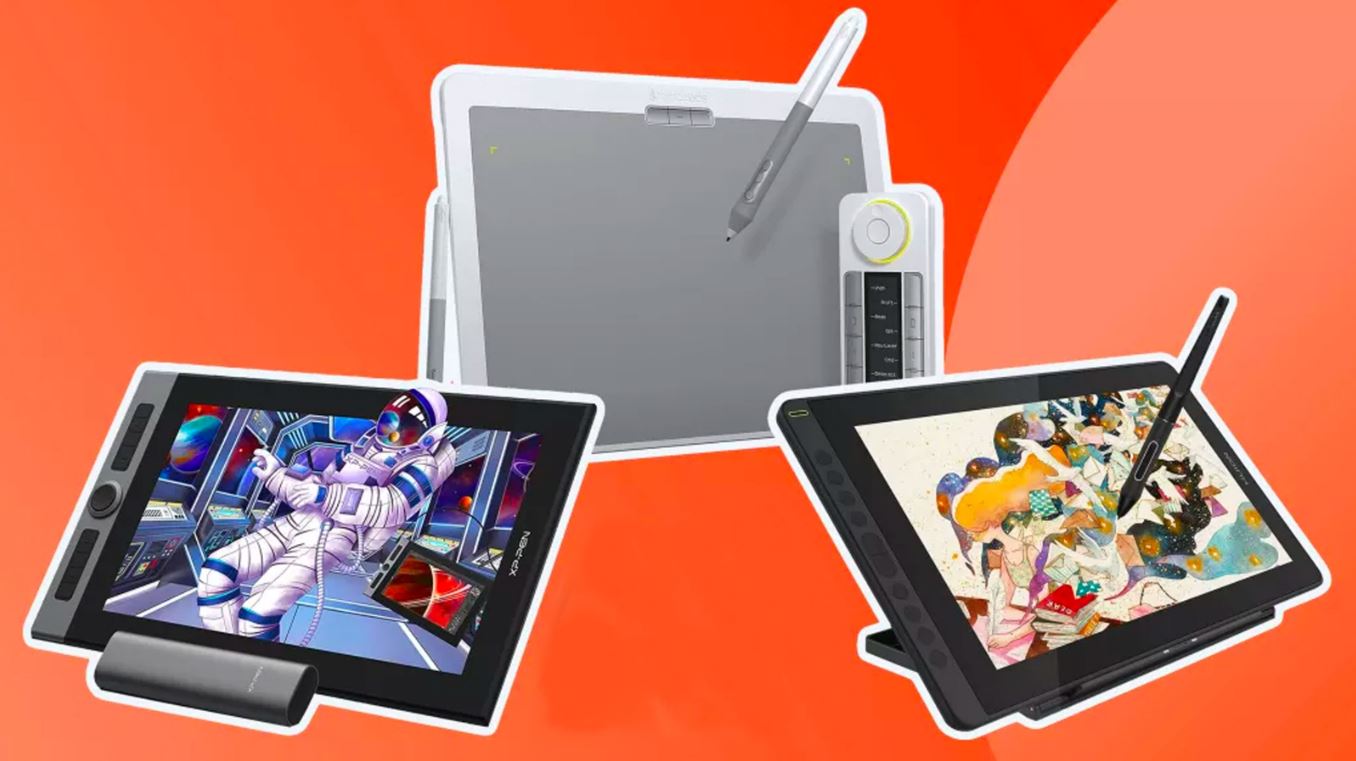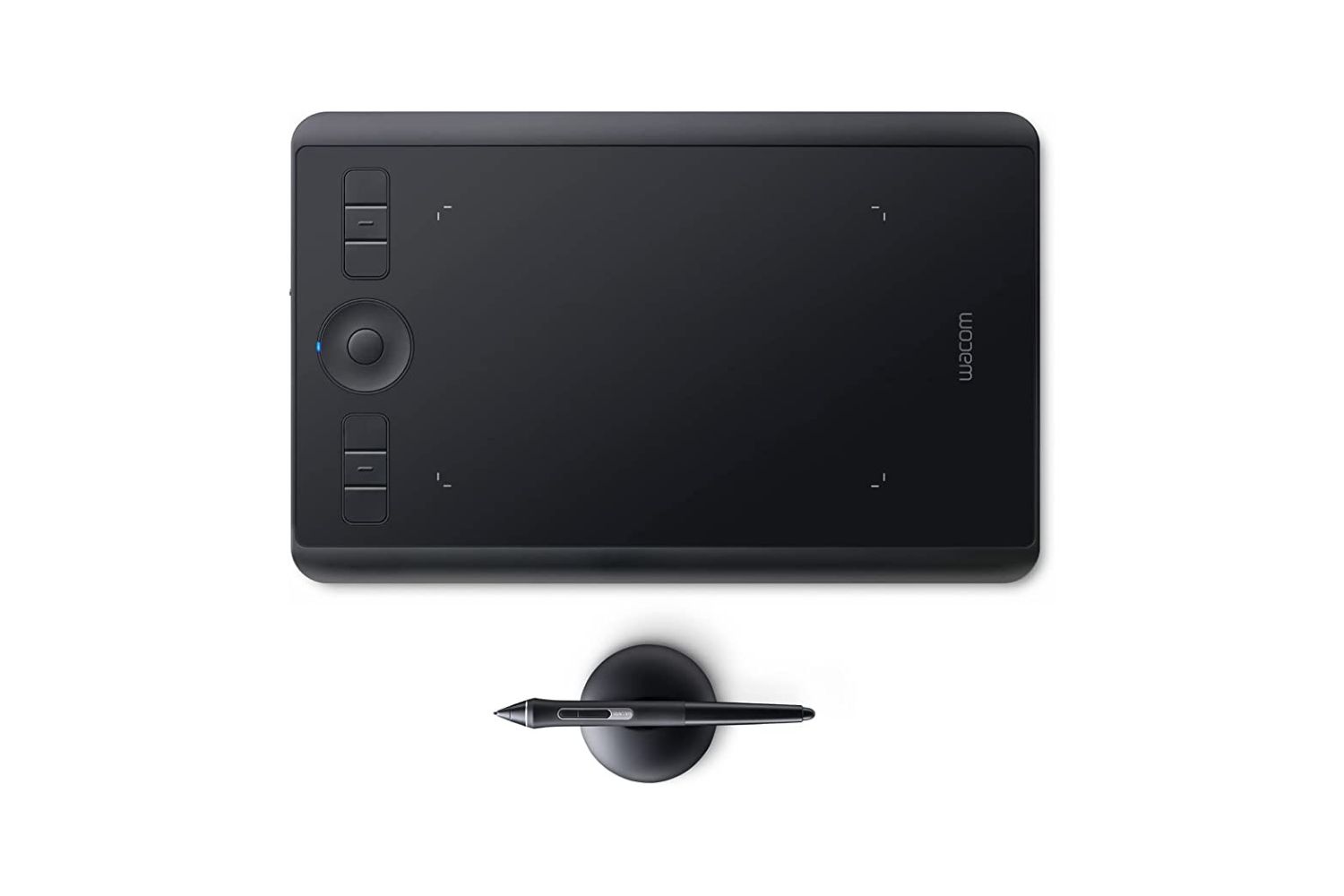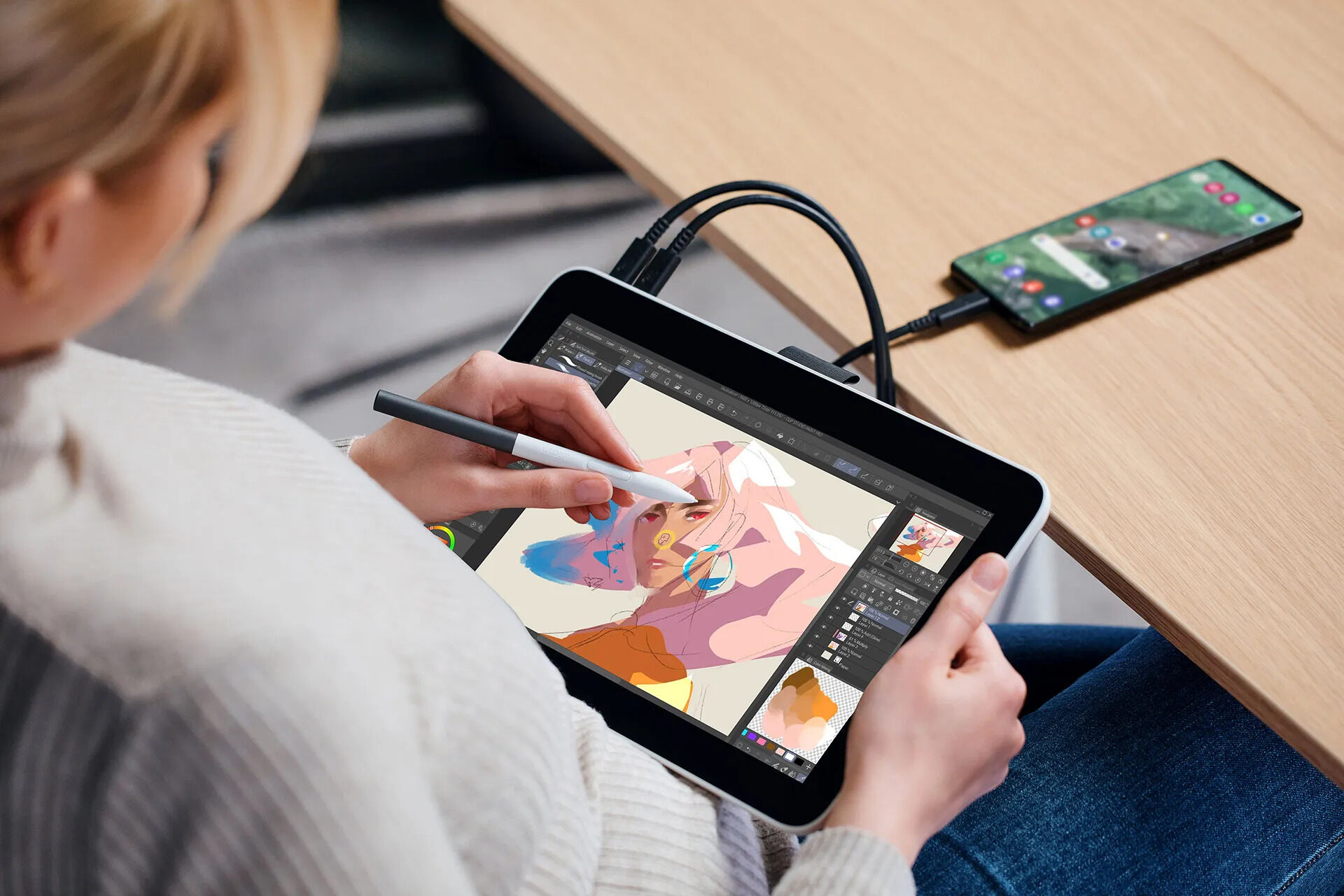Introduction
Welcome to our guide on how to fix pressure sensitivity on Bamboo tablets. If you are an artist or creative professional who relies on the precision and accuracy of a graphics tablet, you understand the importance of pressure sensitivity. This feature allows you to create beautiful digital artwork by varying the thickness, opacity, and flow of your brush strokes. However, like any technology, Bamboo tablets can experience issues with pressure sensitivity, which can be frustrating and hinder your creative process.
In this guide, we will address some common issues you may encounter with pressure sensitivity on your Bamboo tablet and provide step-by-step solutions to help you rectify them. We will explore troubleshooting steps, driver updates, pressure sensitivity settings adjustment, tablet calibration, and even resetting the tablet to factory settings if necessary. By following these methods, you can restore your Bamboo tablet’s pressure sensitivity and get back to creating stunning digital artwork with ease.
We understand that each artist has unique preferences and requirements, so we will provide you with a range of troubleshooting strategies to address your specific needs. Whether you are a beginner or an experienced artist, this guide will equip you with the necessary knowledge and tools to overcome pressure sensitivity issues on your Bamboo tablet.
Please note that the specific steps and instructions mentioned in this guide may vary depending on your Bamboo tablet model and the software you are using. However, the general concepts and troubleshooting strategies discussed here will apply to most Bamboo tablets and can help you diagnose and resolve pressure sensitivity problems.
Without further ado, let’s dive into the world of Bamboo tablet troubleshooting and explore how to fix pressure sensitivity issues. With the right approach and a little bit of patience, you will be back to unleashing your artistic potential in no time.
Understanding Pressure Sensitivity on Bamboo Tablets
Before we dive into troubleshooting pressure sensitivity issues on your Bamboo tablet, let’s first gain a deeper understanding of what pressure sensitivity is and how it works. Pressure sensitivity is a vital feature of graphic tablets like the Bamboo tablet that allows for more precise and natural control over your digital artwork.
Pressure sensitivity refers to the ability of the tablet to detect the varying levels of pressure you apply to the stylus while drawing or writing. When you press lightly on the tablet’s surface, the resulting line or stroke will be thin and light. Conversely, applying more pressure will create thicker and darker strokes. This mimics the effect of using various levels of pressure with traditional art tools like pencils and brushes.
Bamboo tablets support different levels of pressure sensitivity, ranging from a few hundred levels to thousands, depending on the model. The higher the pressure sensitivity, the more accurately the tablet can translate your input into precise variations in line thickness and opacity.
How does the Bamboo tablet detect pressure? Inside the stylus, there is a mechanism that detects the amount of pressure being applied when you press it against the tablet’s surface. This information is then transmitted to the tablet, which interprets it and translates it into the appropriate variations in your digital artwork.
It’s important to note that pressure sensitivity is not solely determined by the tablet itself. While the Bamboo tablet has built-in pressure sensitivity capabilities, it also relies on the software you are using to fully utilize this feature. Most graphic design software, such as Adobe Photoshop or Corel Painter, have built-in support for pressure sensitivity and allow you to customize its behavior according to your preferences.
Now that you have a clearer understanding of pressure sensitivity and its importance, you can proceed to troubleshoot any issues you encounter with this feature. In the next section, we will explore some common problems that can affect pressure sensitivity on Bamboo tablets and discuss the steps you can take to address them. By following these troubleshooting methods, you will be able to restore your Bamboo tablet’s pressure sensitivity and enjoy a seamless digital drawing experience.
Common Issues with Pressure Sensitivity
While Bamboo tablets are known for their excellent pressure sensitivity, there are a few common issues that users may encounter from time to time. These issues can affect the smooth functioning of pressure sensitivity and hinder your ability to create accurate and nuanced digital artwork. Let’s take a closer look at some of these issues:
1. Inconsistent Pressure Sensitivity: One of the most frequent problems is when the pressure sensitivity works inconsistently, creating irregular or unpredictable brush strokes. This issue can be frustrating as it disrupts the flow of your creative process and makes it difficult to achieve the desired effects.
2. No Pressure Sensitivity: Another issue is when the pressure sensitivity feature does not work at all. Your Bamboo tablet may not respond to changes in pressure, resulting in strokes with a uniform thickness, regardless of how lightly or forcefully you apply pressure with the stylus.
3. Unwanted/Unintentional Pressure Variations: On the flip side, some users experience unintended pressure variations, where slight variations in pressure result in dramatic changes in line thickness or opacity. This can make it challenging to achieve precise control over your brush strokes.
4. Intermittent Pressure Drops: Users may also encounter intermittent pressure drops, where pressure sensitivity works fine for a while, but suddenly stops responding mid-drawing. This issue can disrupt your workflow and require constant adjustment and restarting of your software.
5. Pressure “Spikes” or “Jitters”: Another issue is when pressure sensitivity causes sudden spikes or jitters in the brush strokes. These erratic brush movements can be frustrating and make it nearly impossible to achieve smooth and accurate lines.
These common pressure sensitivity issues can arise due to various reasons, such as outdated or incompatible tablet drivers, software glitches, incorrect settings, or even hardware malfunctions. The good news is that most of these issues can be resolved through troubleshooting methods and adjustments to your tablet’s settings. In the next sections, we will explore step-by-step solutions to address these pressure sensitivity problems and help you enjoy a seamless and responsive drawing experience on your Bamboo tablet.
Quick Troubleshooting Steps
If you are experiencing pressure sensitivity issues with your Bamboo tablet, there are a few quick troubleshooting steps you can try before diving into more advanced solutions. These steps can help you identify and resolve common issues quickly. Here are some initial troubleshooting steps you can follow:
- Restart Your Computer: Sometimes, a simple restart can resolve minor software glitches that may be affecting your Bamboo tablet’s pressure sensitivity. It’s always a good idea to start with this basic step to eliminate any temporary issues.
- Check the Stylus Battery: If you are using a battery-powered stylus, ensure that the battery is not drained or incorrectly inserted. Low battery power can cause pressure sensitivity issues. Try replacing the battery or reinserting it correctly.
- Connectivity Check: Make sure that your Bamboo tablet is connected properly to your computer. Ensure that all cables are securely plugged in and that there are no loose connections.
- Try Different USB Port: If your Bamboo tablet is connected via USB, try plugging it into a different USB port on your computer. Sometimes, a faulty or incompatible USB port can cause issues with pressure sensitivity.
- Update Your Graphics Tablet Driver: Outdated or incompatible tablet drivers can cause pressure sensitivity problems. Visit the official website of the Bamboo tablet manufacturer and download the latest driver for your specific tablet model. Follow the instructions provided to install the updated driver.
- Check Software Compatibility: Ensure that your software is fully compatible with your Bamboo tablet and supports pressure sensitivity. Visit the software manufacturer’s website to verify compatibility and learn about any specific settings or updates needed.
- Reset Software Preferences: If you are experiencing pressure sensitivity issues with a specific software program, try resetting its preferences or reinstalling the software. This can solve any software-related issues that may be affecting pressure sensitivity.
By following these quick troubleshooting steps, you can resolve several common pressure sensitivity problems on your Bamboo tablet. However, if the issues persist even after trying these steps, don’t worry—we have more in-depth solutions for you. In the next sections, we will discuss updating drivers, adjusting pressure sensitivity settings, calibrating the tablet, and other advanced troubleshooting techniques to fully restore pressure sensitivity on your Bamboo tablet.
Updating Bamboo Tablet Drivers
Outdated or incompatible drivers can often be the cause of pressure sensitivity issues on your Bamboo tablet. Therefore, it is crucial to keep your tablet drivers up to date. Updating your Bamboo tablet drivers can help resolve compatibility issues, fix bugs, and improve the overall performance of the tablet. Here are the steps to update your Bamboo tablet drivers:
- Identify Your Bamboo Tablet Model: Before updating your Bamboo tablet drivers, you need to know the specific model of your tablet. You can find this information on the back of your tablet or in the device settings on your computer.
- Visit the Manufacturer’s Website: Once you have identified your Bamboo tablet model, visit the official website of the manufacturer. Look for the support or downloads section on the website.
- Download the Latest Driver: In the downloads section, locate the latest driver for your Bamboo tablet model. Make sure to select the driver that is compatible with your specific operating system.
- Install the Driver: After downloading the driver, locate the file on your computer and run the installation process. Follow the on-screen instructions to complete the installation. It is recommended to close any other software programs before installing the driver.
- Restart Your Computer: Once the driver installation process is complete, restart your computer for the changes to take effect.
After restarting your computer, check if the pressure sensitivity on your Bamboo tablet has been restored. Test it with your preferred graphic software to ensure that the adjustments are working as expected.
If your Bamboo tablet drivers were already up to date, or if updating them did not resolve the pressure sensitivity issues, you may need to explore other troubleshooting steps. In the upcoming sections, we will discuss adjusting pressure sensitivity settings in software, calibrating the tablet, and additional troubleshooting methods to help you rectify pressure sensitivity problems on your Bamboo tablet.
Adjusting Pressure Sensitivity Settings in Software
If you have updated your Bamboo tablet drivers and are still experiencing pressure sensitivity issues, it’s time to check and adjust the pressure sensitivity settings within your graphic software. Most professional graphic software applications, such as Adobe Photoshop or Corel Painter, provide options to customize and fine-tune pressure sensitivity to your preference. Here are the steps to adjust pressure sensitivity settings in software:
- Launch the Graphic Software: Open the graphic software application in which you are experiencing pressure sensitivity issues.
- Go to Pen/Stylus Settings: Navigate to the software’s preferences or settings menu. Look for options related to the pen or stylus settings.
- Select Pressure Sensitivity: Locate the option that enables or controls pressure sensitivity. It may be called “Pressure Sensitivity,” “Pen Pressure,” or something similar. Select or enable this option.
- Adjust Sensitivity Levels: Some software applications allow you to adjust the sensitivity levels. Experiment with increasing or decreasing the sensitivity to see if it improves the pressure response. You may need to test and fine-tune these settings to find the ideal balance.
- Test Your Adjustments: Once you have made changes to the pressure sensitivity settings, test them by drawing or painting on your Bamboo tablet. Observe whether the pressure sensitivity is working more accurately and responsively.
If adjusting the pressure sensitivity settings within the software does not yield satisfactory results, you may need to explore additional troubleshooting options. In the next section, we will discuss the process of calibrating your Bamboo tablet, which can help resolve pressure sensitivity issues by ensuring accurate stylus tracking.
Calibrating the Bamboo Tablet
If you are still experiencing pressure sensitivity issues with your Bamboo tablet, calibrating the tablet can help ensure accurate tracking of the stylus and improve pressure sensitivity performance. Calibrating your tablet involves aligning the tablet’s active area with your computer screen, allowing for precise and responsive input. Here’s how you can calibrate your Bamboo tablet:
- Open the Tablet Preferences: Begin by accessing the tablet preferences on your computer. This can usually be found in the control panel or system settings, depending on your operating system.
- Select the Tablet Calibration Option: Look for the option to calibrate or align the tablet. It may be named “Calibration,” “Screen Mapping,” or something similar. Open this option to proceed with the calibration process.
- Follow the On-Screen Instructions: The calibration process usually involves following on-screen instructions. Typically, you will be asked to touch specific points on your tablet with the stylus while corresponding markers appear on your screen. Follow the instructions carefully and accurately.
- Complete the Calibration: Once you have touched all the required points, the calibration process will be complete. Save the changes, if prompted, and exit the tablet preferences.
- Test Pressure Sensitivity: After calibrating the tablet, test the pressure sensitivity by drawing or painting in your preferred graphic software. Check if the pressure sensitivity is improved and responds accurately to changes in pressure.
Calibrating your Bamboo tablet re-establishes a precise connection between your stylus and the tablet’s active area, helping to correct any alignment issues that could impact pressure sensitivity. If calibrating the tablet does not resolve the pressure sensitivity issues, there are a few more troubleshooting steps we can explore in the upcoming sections.
Resetting the Tablet to Factory Settings
If you have exhausted all other troubleshooting methods and are still unable to resolve pressure sensitivity issues on your Bamboo tablet, resetting the tablet to its factory settings may be necessary. Resetting the tablet will restore it to its original configuration, eliminating any software or customization issues that could be causing the problems. Here’s how you can reset your Bamboo tablet:
- Access the Tablet Preferences: Open the tablet preferences on your computer. This can usually be found in the control panel or system settings, depending on your operating system.
- Find the Reset Option: Look for the option to reset or restore the tablet to its factory settings. It may be labeled as “Restore Defaults,” “Reset to Factory Settings,” or something similar. Click on this option to proceed.
- Confirm the Reset: A confirmation window will typically appear, asking you to confirm the reset. Read the warning message carefully, as resetting the tablet will erase any personal settings or customizations you have made. If you wish to proceed, click on the “Confirm” or “Reset” button.
- Wait for the Reset: The reset process may take a few moments. Allow the tablet to complete the reset, and do not interrupt or disconnect the tablet during this time.
- Test Pressure Sensitivity: Once the tablet has been reset to its factory settings, test the pressure sensitivity by drawing or painting in your graphic software. Check if the pressure sensitivity is now functioning properly.
Resetting your Bamboo tablet to its factory settings is a drastic step, so it is important to consider this option as a last resort if all other troubleshooting methods have failed. Before proceeding with the reset, ensure that you have backed up any important files or settings that you may need to restore afterwards.
If you have followed all the troubleshooting steps mentioned in this guide and are still experiencing pressure sensitivity issues, it may be time to seek assistance from customer support. In the following section, we will discuss how to contact customer support for further assistance with your Bamboo tablet.
Contacting Customer Support
If you have exhausted all available troubleshooting options and are still unable to resolve the pressure sensitivity issues on your Bamboo tablet, it may be time to seek assistance from customer support. The support team is equipped with the knowledge and expertise to help you further diagnose and rectify the problem. Here are the steps to contact customer support for your Bamboo tablet:
- Visit the Manufacturer’s Website: Go to the official website of the Bamboo tablet manufacturer and navigate to the support or contact us section.
- Find Customer Support Options: Look for the available options to contact customer support. This may include email, live chat, or a phone number. Choose the option that is convenient for you.
- Provide Relevant Information: When contacting customer support, be prepared to provide relevant information about your Bamboo tablet model, the software you are using, and detailed information about the pressure sensitivity issues you are facing. This will help the support team better understand your situation and provide appropriate guidance.
- Follow the Support Team’s Instructions: Once you have contacted customer support, follow their instructions for troubleshooting or further assistance. They may ask you to perform specific steps or provide additional information to aid in diagnosing the problem.
- Document and Communicate: Throughout the interaction with customer support, keep records of any communication, reference numbers, or case details provided. This will help in case you need to revisit the issue or follow up in the future.
Customer support teams are dedicated to assisting you with any issues you may encounter with your Bamboo tablet. They are well-versed in troubleshooting various technical problems and can guide you through the process of resolving pressure sensitivity issues.
If all else fails, customer support can provide further guidance on possible repairs or replacements for your Bamboo tablet if it is still under warranty. They will be able to advise you on the best course of action to ensure your tablet’s optimal functionality.
Remember, contacting customer support should be viewed as a final step after exhausting all other troubleshooting methods mentioned in this guide. Be patient and cooperative during your interaction with support, as they are there to assist you in resolving the pressure sensitivity problems on your Bamboo tablet.
Conclusion
Pressure sensitivity is a crucial feature of Bamboo tablets that allows artists and creatives to express their artistic vision with precision and nuance. However, encountering pressure sensitivity issues can be frustrating and hinder the creative process. Throughout this guide, we have explored various troubleshooting steps to help you address pressure sensitivity problems on your Bamboo tablet.
We started by gaining a deeper understanding of pressure sensitivity and its importance in creating digital artwork. We then discussed common issues that can affect pressure sensitivity, such as inconsistency, lack of sensitivity, unintended variations, intermittent drops, and pressure spikes or jitters.
We provided quick troubleshooting steps, including restarting your computer, checking the stylus battery, connectivity, and trying different USB ports. Updating your Bamboo tablet drivers and adjusting pressure sensitivity settings in software were explored as well. If these steps didn’t resolve the issue, we discussed calibrating the Bamboo tablet and resetting it to factory settings to ensure accurate input tracking.
If all else fails, we recommended reaching out to customer support for further assistance. Their expertise and guidance can help you navigate through more advanced troubleshooting methods and explore potential repairs or replacements, if necessary.
Remember, each Bamboo tablet model and software may have specific steps and settings, so it’s essential to consult the documentation and resources available from the manufacturer’s website. By following the suggestions in this guide and seeking assistance when needed, you can resolve common pressure sensitivity issues and restore a seamless drawing experience on your Bamboo tablet.
Keep exploring, experimenting, and creating with your Bamboo tablet, knowing that you have the tools to overcome pressure sensitivity challenges and channel your artistic vision with finesse.







